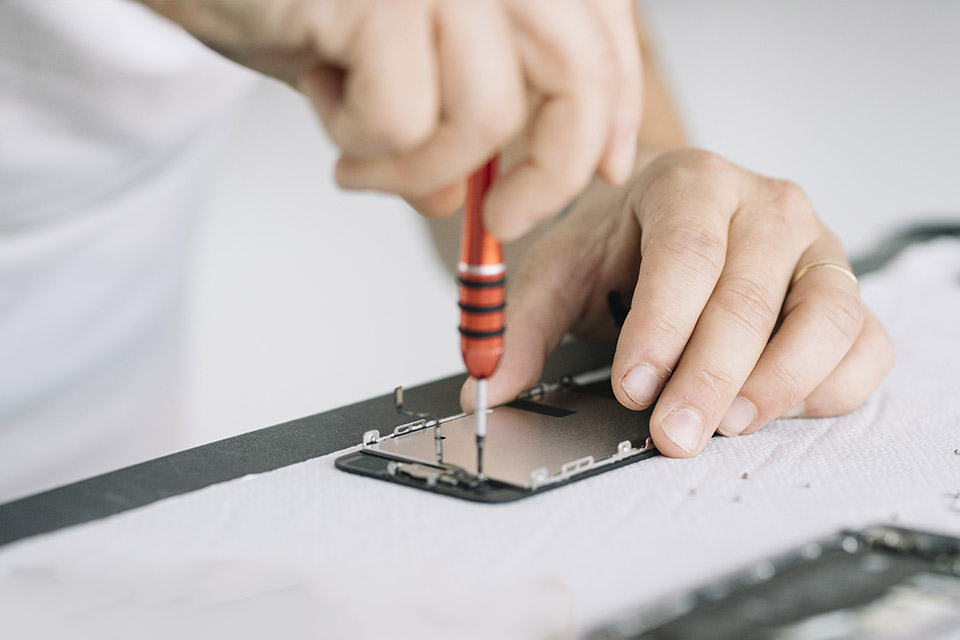 The ability to repair items is supported by environmentalists, consumers, and servicemen, alike. Fixing products, rather than disposing of them, reduces waste, money, and time associated with purchasing fully new replacements. These attitudes and approaches combat the actions of planned obsolescence, which allows manufacturers to increase profit by forcing continued purchases.
The ability to repair items is supported by environmentalists, consumers, and servicemen, alike. Fixing products, rather than disposing of them, reduces waste, money, and time associated with purchasing fully new replacements. These attitudes and approaches combat the actions of planned obsolescence, which allows manufacturers to increase profit by forcing continued purchases.
These opponents of planned obsolescence are furthering their mission by advancing the Right to Repair movement. This is achieved through recent policy. For example, Senate Bill 744 developed in Pennsylvania asserts that “consumers own their products, they deserve to be able to get their products repaired (or to repair them themselves) at a reasonable price.” Its purpose is to require manufacturers of “digital electronic equipment to make available to owners and independent repair providers, on fair and reasonable terms, documentation, parts and tools used to diagnose, maintain and repair digital electronic equipment.” Instead of fully replacing broken items, specific parts should be available and trained technicians who can complete the process.
The implications behind the Right to Repair movement are illustrated in the image above. It requires products to be designed intentionally for accessible repairs, and require additional regulations and restrictions. Although this is admittedly complex for some repair providers and corporations, its advantages include further support for small business, avoidance of economic monopolies, and a reduction in the output of waste, consequently improving ecosystems, saving customers money, and an expansion of part availability.

Many additional bills are pending or, in some cases, have been denied in some states. However, the increase in awareness about planned obsolescence and its environmental and economic impacts has sparked more aggressive action to further the Right to Repair movement in recent years.
Sources:

tmd6040
April 12, 2024 — 2:44 pm
While reading your posts I was always thinking about digital technology, but here you brought up the example of farming machines, and it is now clear that this issue of having the right to repair is much larger than just cell phones. I think that it is very important to be able to get repairs at a reasonable price, and currently that doesn’t happen nearly enough. Part of the issue is that consumers sometimes lack the knowledge of how much a repair should really cost, so they accept the overcharge.
Vivienne Booz
April 12, 2024 — 2:57 pm
This post clearly and concisely lays out the need for legislation supporting individuals’ right to repair their own belongings. It seems very intuitive that once an item is in the possession of an individual, that individual should have fair and free access to repair resources. Planned obsolescence is something that consumers should be aware of before they purchase an item. They should consider weather or not planned obsolescence might affect their purchase and look for a seller who respects their right to repair if possible. I think this is especially important for consumers who are making large, important purchases that will affect their businesses and livelihoods (such as farmers).
kac6972
April 12, 2024 — 4:12 pm
When one of my appliances broke a few days ago–an ultrasonic cleaner that I use to clean my jewelry and retainer–I immediately thought of this blog. As I had gotten it off of Amazon, and the one-year warranty had already passed, there was no way to get it repaired; I was forced to purchase a new one. Thus, I agree that products need to be designed in a way that they can be feasibly repaired; I wonder if extending product warranties for free repairs might be an additional way to limit discarding broken appliances. I also appreciated how you mentioned the agricultural implications of the right to repair. Many people don’t realize just how expensive farming is!